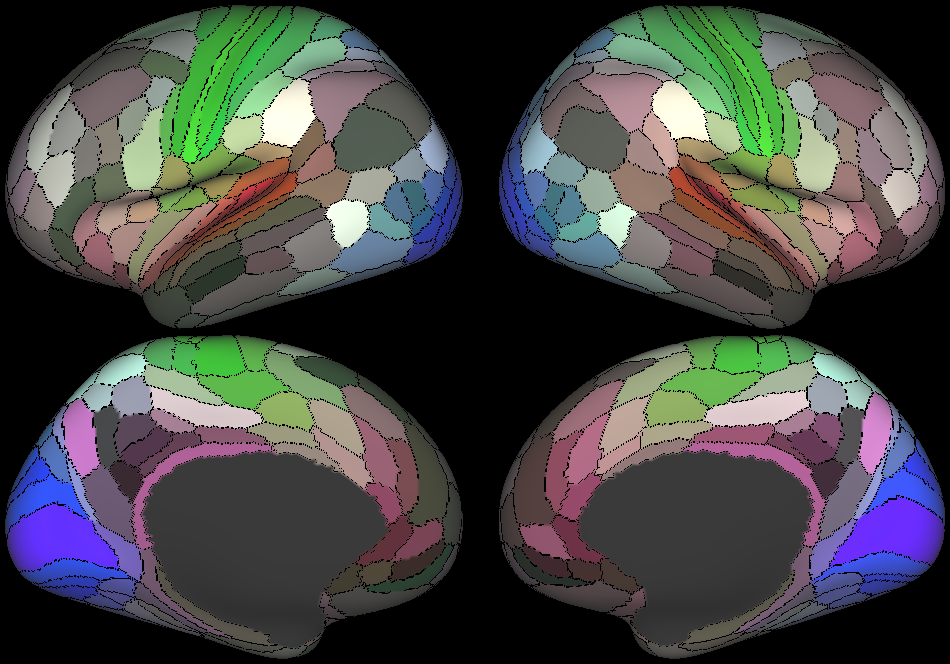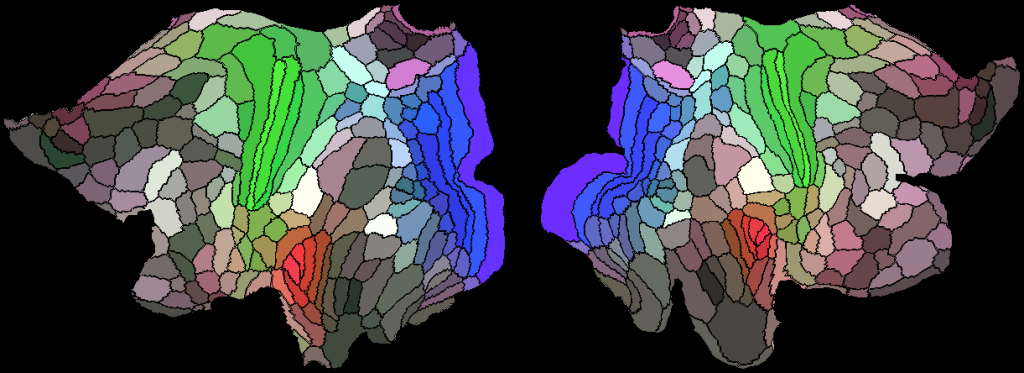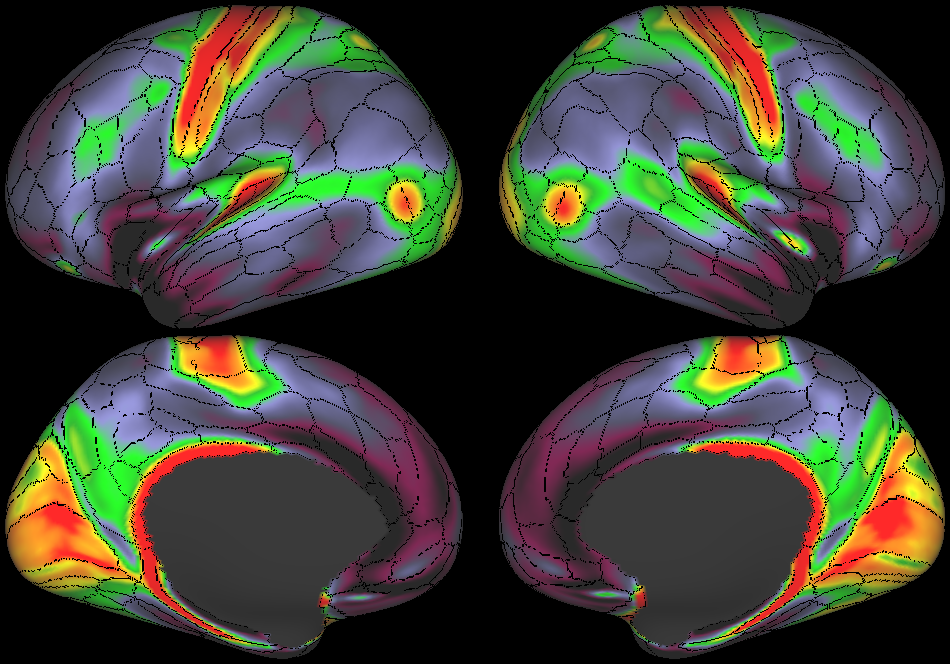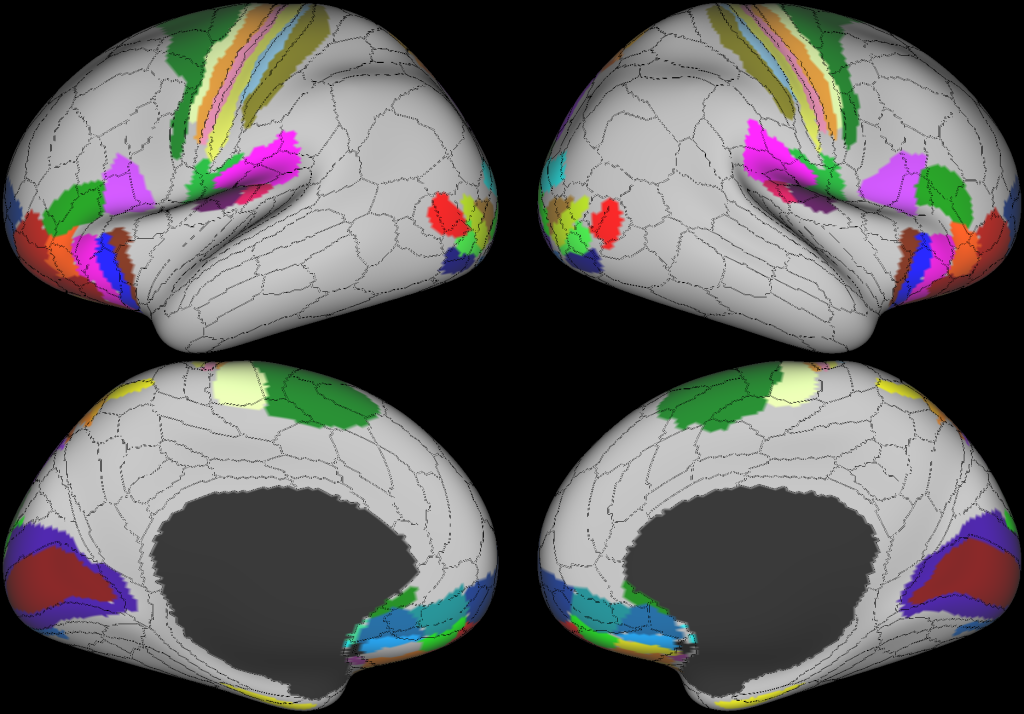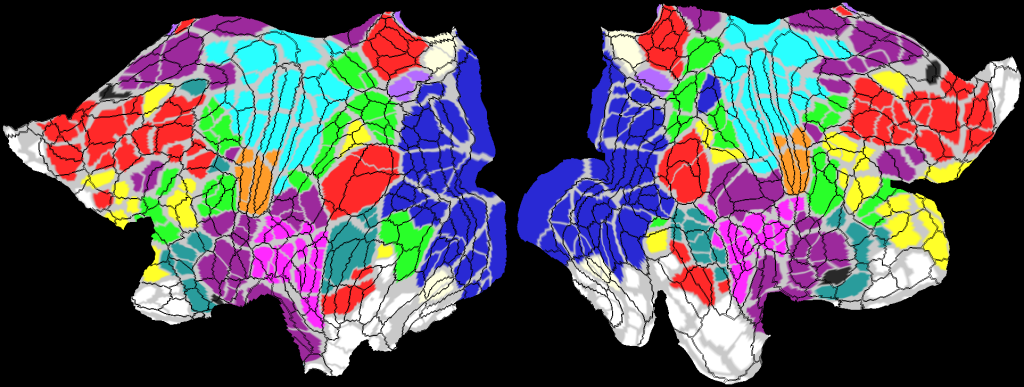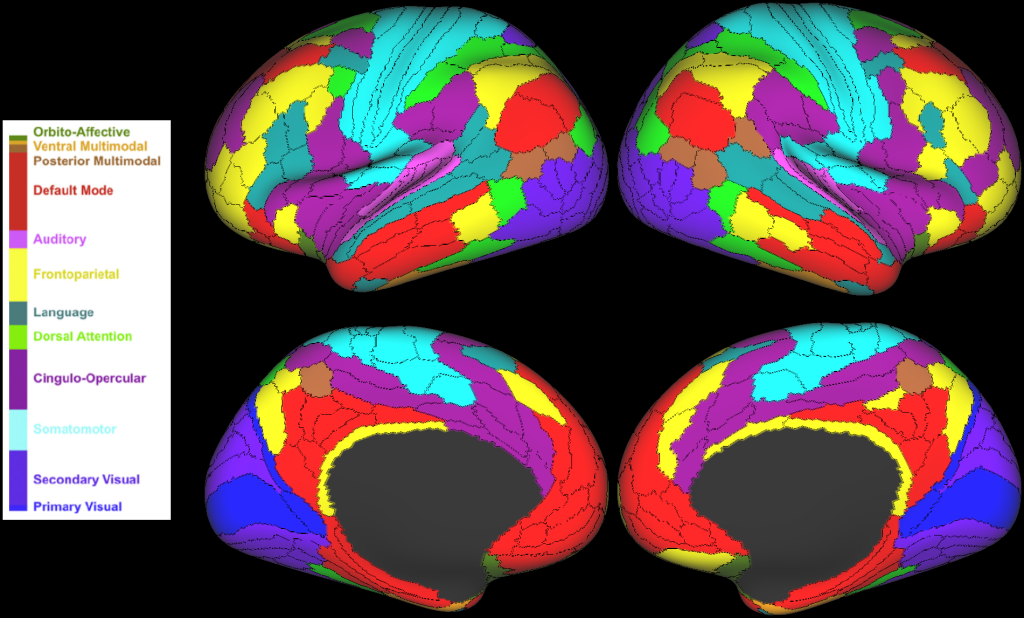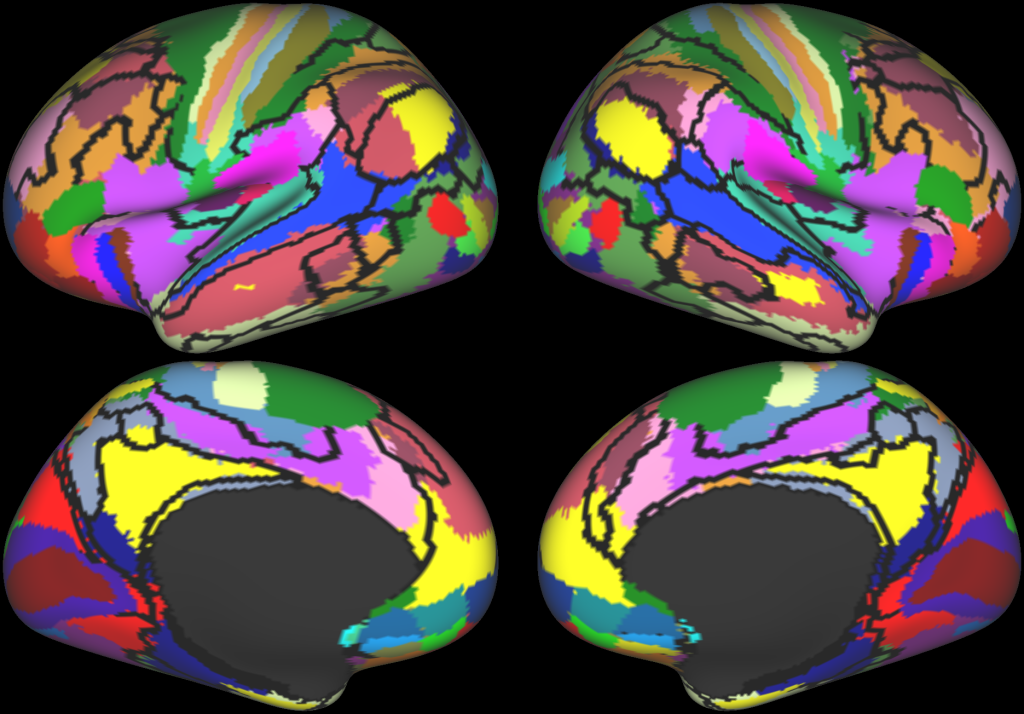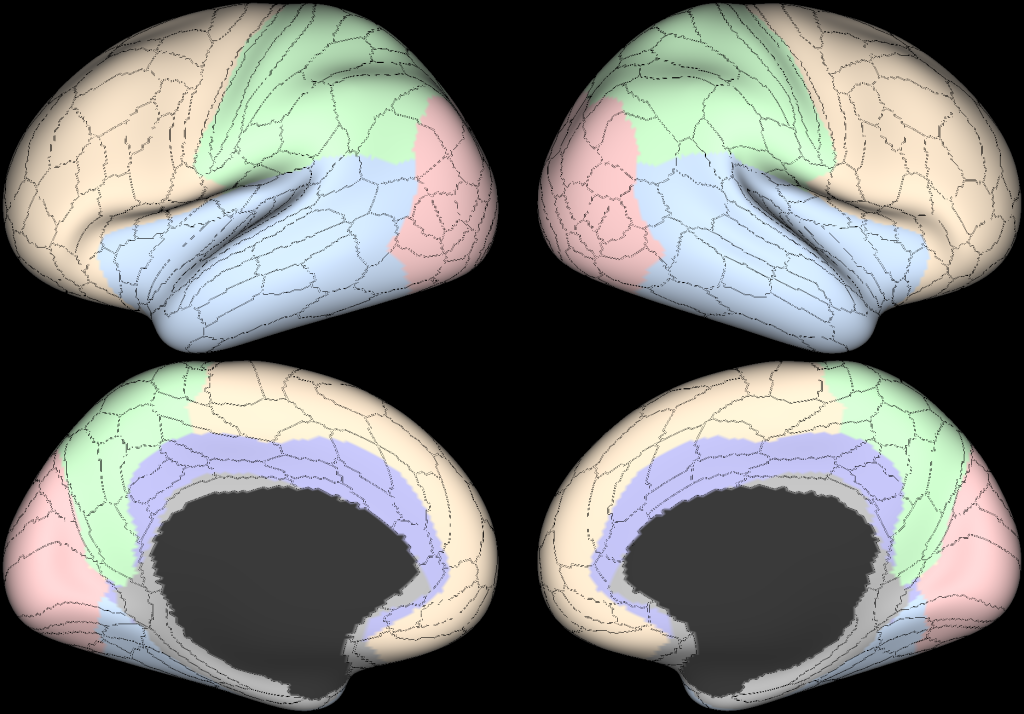FULL TITLE:
Human Cortical Parcellations
SPECIES:
Human
DESCRIPTION:
This BALSA Reference dataset includes seven surface-based human cortical parcellations from 5 published studies, displayed on HCP S1200 group average surfaces, along with S1200 group average maps of myelin, curvature, sulc (FreeSurfer's analog of sulcal depth), and curvature-corrected cortical thickness.
There are eight scenes (and multiple tabs in each scene), showing different parcellations alone or in combined overlays, along with other data underlays. These displays facilitate evaluation of each parcellation in its own right and enable comparisons between parcellations on a common surface-based atlas substrate. The scene file dataset can be downloaded in its entirety or by selecting particular parcelllations and/or other data files of interest.
The cortical parcellations include:
1) The HCP_MMP1.0 cortical parcellation (210V validation version and also the 210P parcellation version) from Glasser et al. (Nature, 2016)
Glasser, M.F., T.S. Coalson, E.C. Robinson, C.D. Hacker, J. Harwell, E. Yacoub, K. Ugurbil, J. Andersson, C.F. Beckmann, M. Jenkinson, S.M. Smith, and D.C. Van Essen. (2016) A multi-modal parcellation of human cerebral cortex. Nature 536: 171-178. (doi: 10.1038/nature18933). PMID: 27437579
2 and 3) The "VDG11" 52-area composite architectonic and fMRI retinotopic map and the Brodmann (1909) cytoarchictectonic map reported by:
Van Essen, DC, Glasser, MF, Dierker, D, Harwell, J, and Coalson, T (2012) Parcellations and hemispheric asymmetries of human cerebral cortex analyzed on surface-based atlases. Cerebral Cortex 22: 2241-2262. (doi: 10.1093/cercor/bhr291). PMID: 22062192
4) The Gordon et al. resting-state network (RSN) parcellation from Gordon EM, Laumann TO, Adeyemo B, Huckins JF, Kelley WM, Petersen SE (2016) Generation and Evaluation of a Cortical Area Parcellation from Resting-State Correlations. Cereb Cortex.26:288-303. doi: 10.1093/cercor/bhu239. PMID: 25316338
5 and 6) The 17-network and 7-network RSN parcellation from Yeo et al. (2011): Yeo BTT, Krienen FM, Sepulcre J, Sabuncu MR, Lashkari D,
Hollinshead M, Roffman JL, Smoller JW, Zöllei L, Polimeni JR et al. 2011. The organization of the human cerebral cortex estimated by intrinsic functional connectivity. J Neurophysiol. 106: 1125–1165. doi: 10.1152/jn.00338.2011 PMID: 21653723
7) The 12-network Cole-Anticevic Brain Network Parcellation (CAB-NP) RSN parcellation of Ji et al. (2019): Ji JL, Spronk M, Kulkarni K, Repovš G, Anticevic A, Cole MW (2019) Mapping the human brain's cortical-subcortical functional network organization. Neuroimage 185:35-57. doi: 10.1016/j.neuroimage.2018.10.006. PMID: 30291974
-
HCP_S1200_CorticalParcellations_BALSAref.scene
SCENES:- MMP1.0 210V Parcellation on inflated surfaces
- MMP1.0 210V Parcellation on flatmaps
- Probabilistic areas MMP1.0 210V
- MMP1.0 210V parcel borders overlaid on S1200 group-average myelin maps
- VDG11 Composite parcellation with MMP1.0 210V borders overlaid
- Gordon333 resting-state-network parcellation with MMP1.0 210V borders overlaid)
- Cole-Anticevic Brain Network Parcellation (CAB-NP) + MMP1.0 210P borders
- Yeo et al. (2011) 17-network RSNs with CAB-NP RSN borders overlaid
- Human Cortical Lobes (from PALS_B12 atlas) with HCP_MMP borders overlaid

